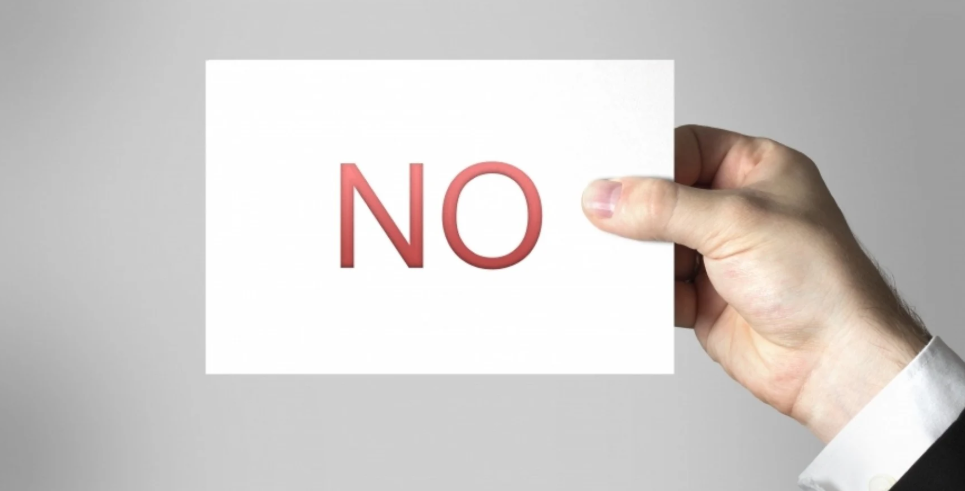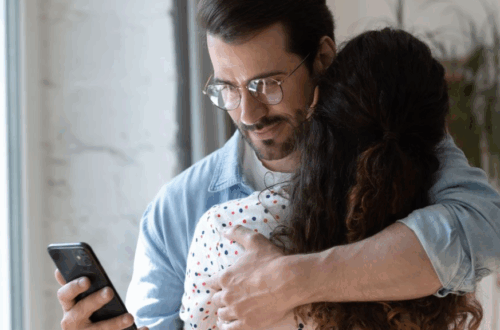JSomeone wants something from you or asks you for a favor, and like a shot from a cannon a resounding “ Yes, of course! ” comes out of your mouth, while at the same time your mind is screaming “No” at the top of its lungs.
You know these situations in life, don’t you? It’s not uncommon to be annoyed with yourself for days or even weeks afterwards! You are angry with yourself because you simply couldn’t bring yourself to say “no,” even though you really wanted to.
It’s particularly bad when we say yes to someone we don’t really know that well, or maybe we don’t even really like that person. To make it easier for you to say “no” in these challenging situations in the future , I’ve put together 7 tips for you below.
1. Find out why you find it difficult to say “no” in a certain situation
If there are one or more recurring situations in which you find it difficult to say “no,” the first step should be to conduct a brief self-analysis and figure out why you find it so difficult to say “no” in this situation(s).
Grab a piece of paper and a pen and write down why you think you can’t say “no.” Finally seeing possible psychological causes laid out in black and white can help you enormously in perceiving these situations with greater awareness in the future and thus responding better to them.
2. Take your time to think
If you feel like you’re being blindsided by a request, a task, a favor, or an offer, make it a habit to first give yourself some time to think things over by making a polite but firm statement. This will allow you to gather your thoughts and courage and tell the person “no” later. So remember: If you’re blindsided, you allow yourself to be blindsided!
3. Start by saying “no” to yourself
Another way to learn how to say “no” properly is to first learn to say “no” to yourself. If you can’t say no to yourself or your own temptations and distractions, you certainly won’t be able to say “no” to others.
So, for example, if you always give in to your desires and cravings and don’t demonstrate discipline or willpower by saying “no” to yourself, you’ll find it difficult to say it to others.
4. Learn to communicate “no” correctly
How you communicate it to the other person is extremely important when saying no correctly. You have to learn to come across as clear, but not brutal or inconsiderate. Simple things like giving reasons for the “no”, showing understanding, or saying thank you can take the harshness out of the “no” and make it much more pleasant for the other person. So it
‘s best to have a few phrases in your communication repertoire, such as ” Thank you very much for the offer, but I’m afraid I have to politely decline… ” or ” That’s really nice of you to ask, but unfortunately I can’t agree to this… “, which you can use in such situations to make it more pleasant for the other person.
5. See through attempts at manipulation
Unfortunately, there are also cunning individuals who are very adept at manipulating others to a certain extent and getting them to say “yes” more or less against their own will. They do this by using things like helplessness, pity, pressure, flattery, surprise, or guilt.
Learn to see through such lousy manipulation attempts or recognize them in time, and it will be much, much easier (and even a little enjoyable) for you to say “no” to these people and their requests.
6. Practice saying “no”
As is always the case when it comes to personal development, saying no takes time and practice to become good at it, and to actually be able to say no to someone confidently without feeling guilty afterwards. If it doesn’t work out for you straight away in the next situation, that’s not a problem at all. Quite the opposite.
It’s actually completely natural. The important thing is that you start to be more aware of such situations and you’ll see that every time you do it, you get a little closer to saying “no”. And once you’ve managed it once, it will be a lot less difficult the next time.
7. Make a counter offer
Saying no properly can also mean presenting the other person with a different approach or alternative suggestion as a kind of counter-offer. In other words, you suggest another idea of how they could solve the problem or task – without your help.
This shows the other person that you care, but at the same time you signal that you are not available. Another option is to propose a kind of deal where you are happy to offer your help if you receive something in return. Of course, you shouldn’t use this all the time and you should help others out without demanding anything in return, but occasionally this technique can be just the right thing .
Two tools to make it easier to say no
To make it easier to say no and avoid being plagued by feelings of guilt or remorse afterwards, I would now like to briefly introduce you to two “shortcuts” or tools that will help you:
Clearly define your priorities
If you’ve clearly defined your priorities in life, it’s much easier to politely say “no” when you feel like the other person’s request, favor, or offer means you have to put your own priorities aside. So, it’s best to write down your own priorities in life and realize that every request and every favor you give in to against your will or your gut feeling means that these priorities are being neglected somewhere.
Build your self-esteem & self-confidence
Once you start working on and building your self-confidence and self-esteem , you’ll automatically notice that it’s easier for you to handle difficult situations where you used to say “yes” instead of “no.”
These two character traits make saying no much more “natural” and easier, because in those moments, you’re no longer someone who has to fight their own fears, but someone who confidently faces them and leaves them behind.





